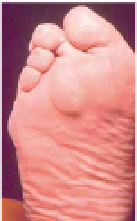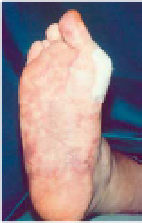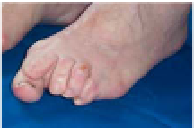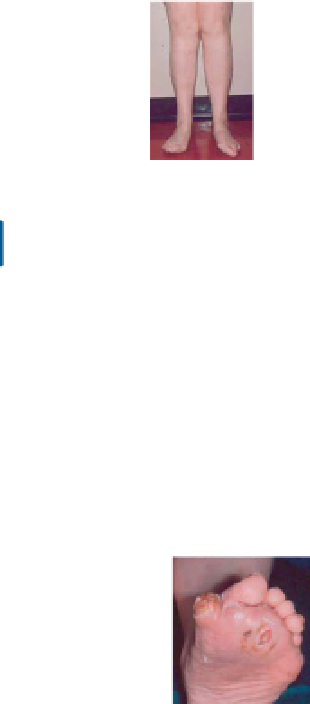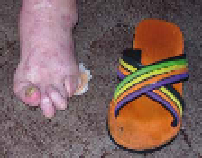what-when-how
In Depth Tutorials and Information
2
Plantar pressure distribution under the foot can be measured using
platform or in-shoe pressure measurement systems. Peak pressure and the
pressure time integral are frequently higher than normal in the forefoot, and
associated with pain, stiffness and deformity. In pes planovalgus, the col-
lapse of the medial longitudinal arch is associated with increased contact
and force in the midfoot. Plantar pressure measurement can be used to
evaluate the effectiveness of foot interventions such as foot orthoses and
footwear, particularly using in-shoe systems. This is useful for both research
and clinical purposes in evaluating the impact of foot orthoses and also
identifying vulnerable areas that may ulcerate. Vasculitis (inflammation and
necrosis of blood vessels) and neuropathy are also considered as potential
factors in the development of foot ulceration (
Figure 2.6
).
Abnormal foot and limb structure + poor footwear
Increased pressure
(+ vasculitis and/or
neuropathy)
Callus?
Necrosis of tissue
Break in epidermis/dermis
figure 2.6
Pathway to ulceration in the RA foot















































